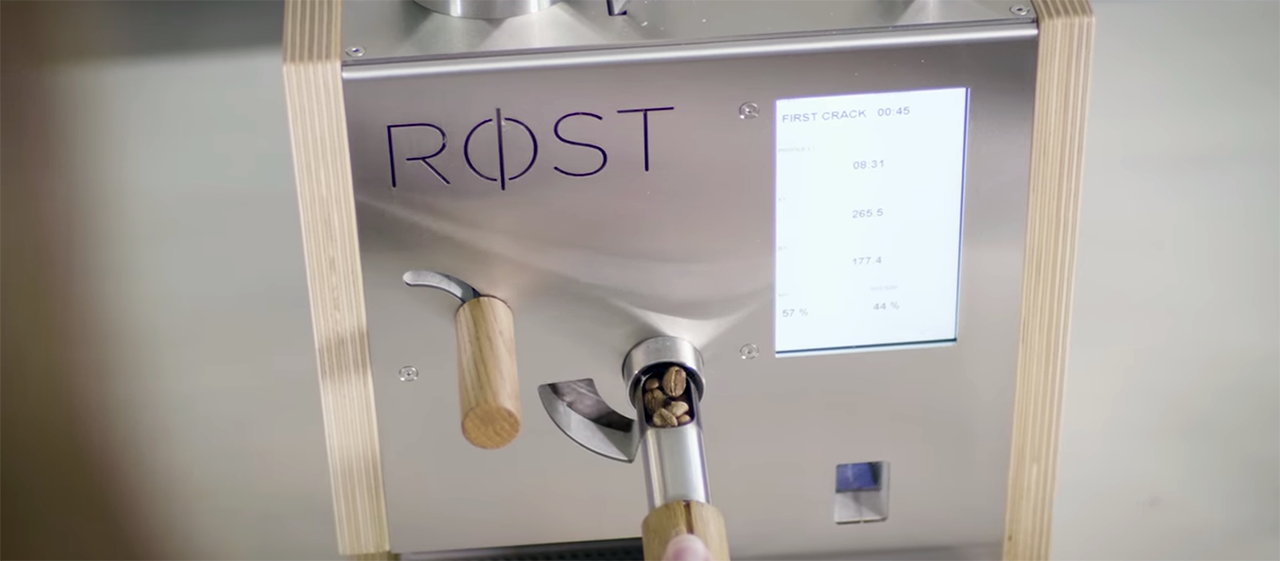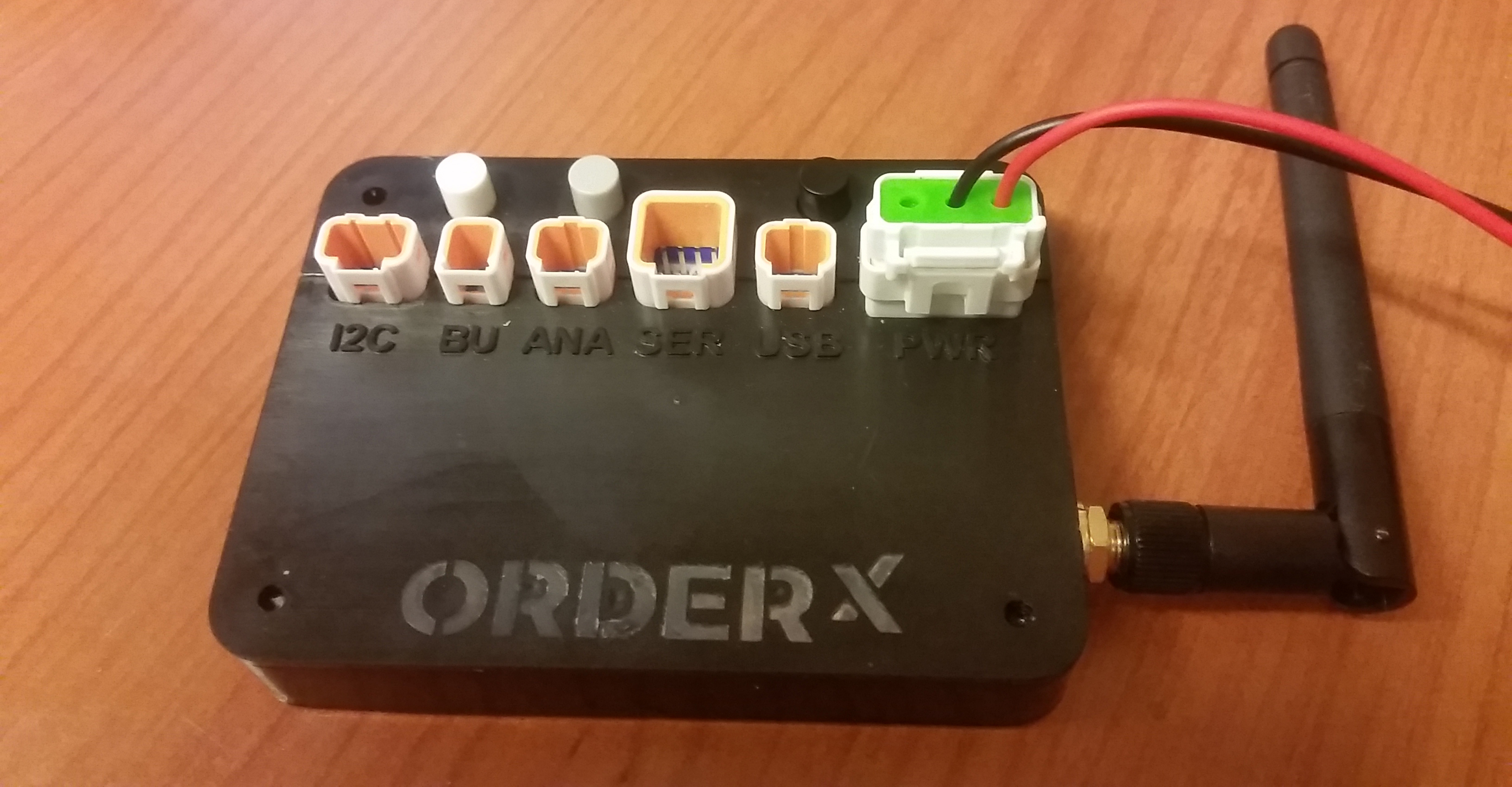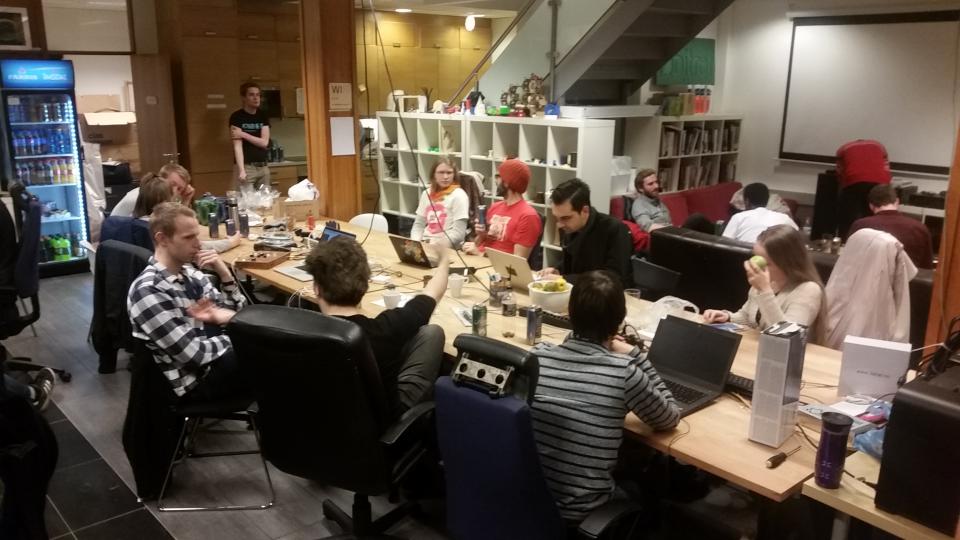Embedding myself in devices
19 November 2017 at 10:58 am

This blog’s been a litte dead the last year as I’ve been head deep in two big projects in addition to teaching more than before at Westerdals ACT. I’m not dead and I’m having a blast!
I’m doing exactly what I want at the moment and I feel that I’m creating really good stuff.
Rost
For the two brothers Simonsen, I’m creating the electronics and software for their Røst coffee roasting machine. It’s a beautiful machine that has already won a RedDot Award for the design and “Best New Product” in the technology category at World of Coffee in Budapest. The software and electronics is controlling fans, brushless motors, stepper motors, super high precision temperature sensors, gas burner, spark ignition, capacitive touch screen, encoder, sensors and has a host of safety features. The machine has passed CE and UL testing and is now in sale across the world. Read more about the machine here or check the video below.
OrderX
This project I’ve worked on for almost two years by now. Imagine you’re at a festival and need a beer. There’s always a beer-line and the guy in front of you will always wait until it’s his turn at the bar to start planning. Wouldn’t it be nice if the bar had glasses ready and they started tapping the second you hit the BUY button on your phone?
What we’ve managed with this project is to take the already great BottomsUp system (taps a beer in 4 seconds!) and added an ordering system via an App. The App talks to a controller box under the bar that can remote control the entire tapping system. From you click the Buy-button until you have (up to) 6 beers is just 5 seconds - including payment! This has been a blast to develop and it’s now ready for the masses. You can see an older version of the system in action here and this is how the (injection moulded) box now looks after 3 iterations. OrderX also handles tapping and payment for large events and festivals.
Westerdals ACT
Four years ago a friend told me to apply for a job teaching Embedded Systems at Westerdals Oslo School of Arts, Communication and Technology (or Westerdals ACT for short). At that time I felt a little under-qualified, but they really needed someone to do the course. I said yes and over the years I’ve found that I’m certainly just as qualified as many of the other teachers. I built the course so that it’s one of the most complete Arduino courses there is. It’s 12 weeks with 4 hour lectures each week that takes the students from complete noobs to someone that could make a simple prototype for a project. I try to cover all the basics whitout going too far into the details, while covering all the things I think will be useful for them. One of the last lessions we have a PiDay where we go through some of the same projects in Embedded Linux, so they get to try it from that side also. I’ve now done the course 7 times and the students love it!
Last year the school asked me to build a second course that builds upon the Embedded one. The topic is Machine to Machine communications and briefly said - it takes the prototypes that the students learned to make in the Embedded course and teaches them how to connect them to the cloud. We go though lots of cloud related technologies, play around with radios, communications protocols and build complete M2M networks. I score very well when the students review their teachers each year and I really enjoy the interation with the students. I’ve always loved presenting and teaching, so I think I might do more of this in the years to come.
Bitraf
Anyone knowing me will probably know that I don’t just have my office at Oslo’s biggest Hackerspace, I also help organize it. I’m no longer in the Board, but I maintain our contact with the landlord (Olav Thon) and make sure things “just work” in general. Bitraf is a Do-ocracy and it’s amazing how well this works even if there’s just a few people doing things. Bitraf has grown from a 20 ppl Hackerspace with coworking (130 sq/m) to a massive combined Hackerspace/Makerspace/Coworking space with 250+ members and several events each week (now with 950 sq/m space). Back when we started, we dreamed about getting a laser. About two years ago I purchased one and last week we just received our second laser cutter. We now have 2 lasers, 4 CNC’s, 2 lathes, complete SMD workstation, huge workshop, a sewing room, a chemistry/bio room, seven 3D printers, all the hand tools you’ll ever need, lots of workspace for projects…
It’s just grown really well organically and only with members funding it. We have done this completely without government grants, so I’ll do a writeup on how to run and fund such a space soon.


